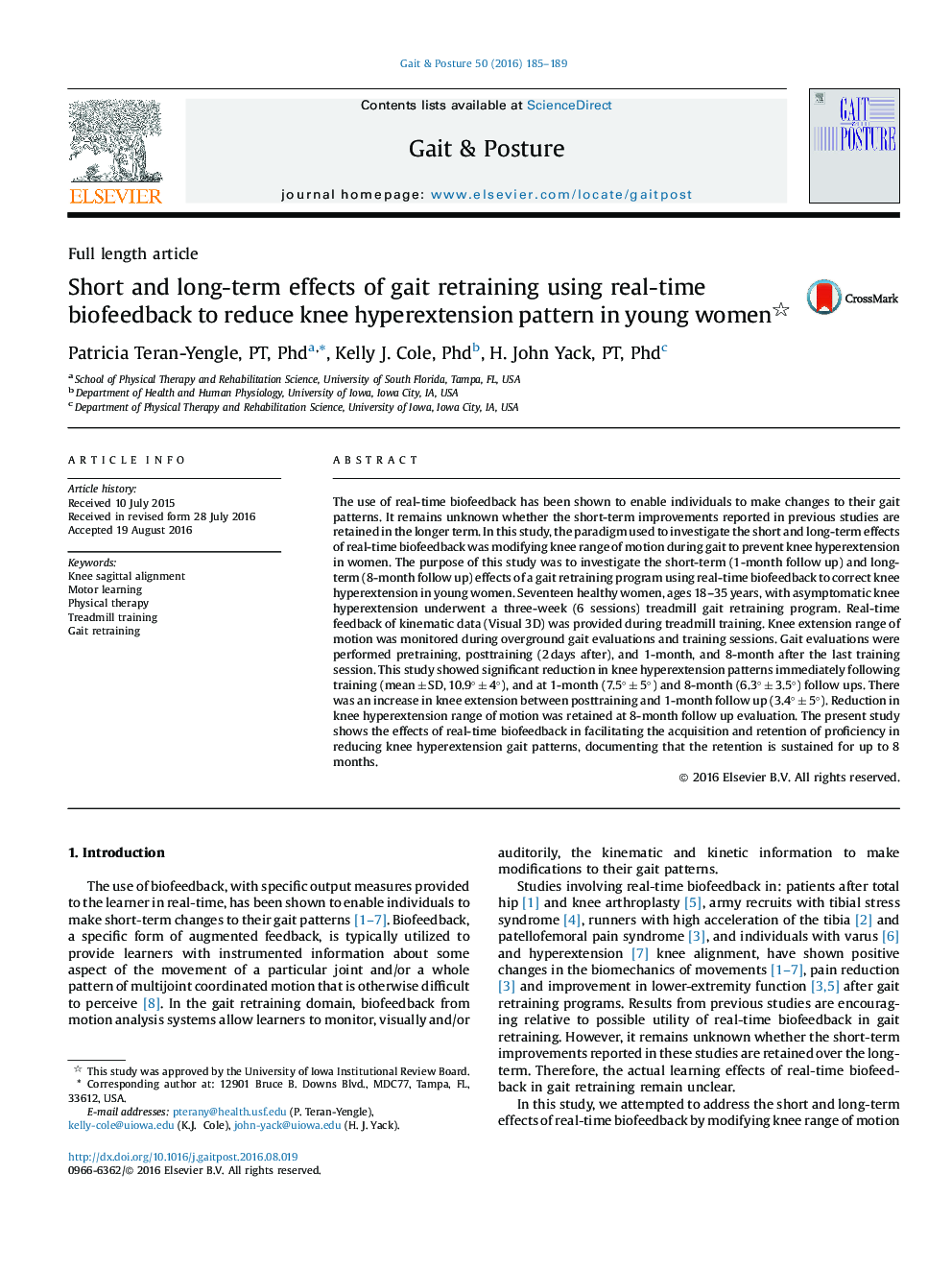| کد مقاله | کد نشریه | سال انتشار | مقاله انگلیسی | نسخه تمام متن |
|---|---|---|---|---|
| 6205331 | 1603845 | 2016 | 5 صفحه PDF | دانلود رایگان |

- Real-time biofeedback was used to control knee hyperextension gait pattern.
- There was a significant reduction in knee hyperextension following training.
- Increase in knee extension at 1-month follow up may represent skill consolidation.
- Proficiency in controlling knee hyperextension was sustained for up to 8 months.
- Real-time biofeedback facilitated acquisition and retention of motor skill.
The use of real-time biofeedback has been shown to enable individuals to make changes to their gait patterns. It remains unknown whether the short-term improvements reported in previous studies are retained in the longer term. In this study, the paradigm used to investigate the short and long-term effects of real-time biofeedback was modifying knee range of motion during gait to prevent knee hyperextension in women. The purpose of this study was to investigate the short-term (1-month follow up) and long-term (8-month follow up) effects of a gait retraining program using real-time biofeedback to correct knee hyperextension in young women. Seventeen healthy women, ages 18-35 years, with asymptomatic knee hyperextension underwent a three-week (6 sessions) treadmill gait retraining program. Real-time feedback of kinematic data (Visual 3D) was provided during treadmill training. Knee extension range of motion was monitored during overground gait evaluations and training sessions. Gait evaluations were performed pretraining, posttraining (2 days after), and 1-month, and 8-month after the last training session. This study showed significant reduction in knee hyperextension patterns immediately following training (mean ± SD, 10.9° ± 4°), and at 1-month (7.5° ± 5°) and 8-month (6.3° ± 3.5°) follow ups. There was an increase in knee extension between posttraining and 1-month follow up (3.4° ± 5°). Reduction in knee hyperextension range of motion was retained at 8-month follow up evaluation. The present study shows the effects of real-time biofeedback in facilitating the acquisition and retention of proficiency in reducing knee hyperextension gait patterns, documenting that the retention is sustained for up to 8 months.
Journal: Gait & Posture - Volume 50, October 2016, Pages 185-189